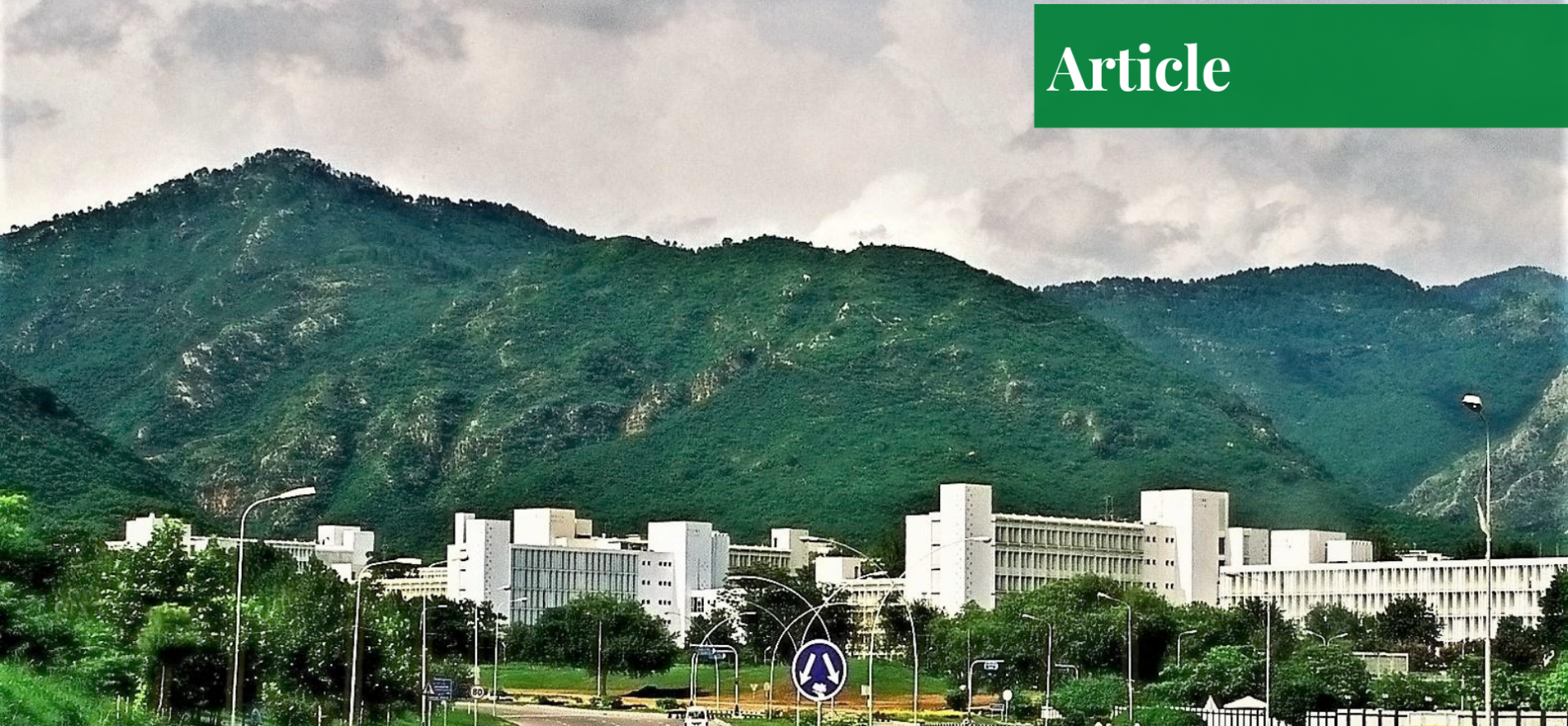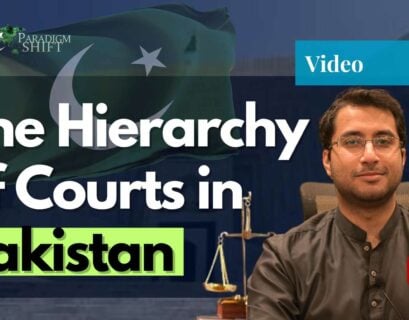Hassan Nasir works at British Council Pakistan. He completed his MS in Economics from Queen Mary University in London.
Pakistan’s Public Sector
The public sector in Pakistan has a vast role in its economy via different regulatory bodies, providing products and services in the health, energy, defense, and transportation sectors. The part of the economy concerned with providing basic government services to the people is called the public sector. It is the primary role of the government to provide a legal agenda within which all economic transitions occur.
In general, the undertakings of any government fall into the following four categories:
- Production of goods and services
- Regulation and subsidization of private production
- Purchase of goods and services, for example, defense and/or health-related
- Redistribution of income, for example, transfer payment, social security, and/or unemployment benefits
The public sector in Pakistan is largely seen as being incompetent and inefficient in its work, with charges of corruption and inefficiency being cited as primary culprits.
The Public Sector’s Activities
Water and Power Development Authority and Karachi Electric Supply Corporation are assigned the task of producing and distributing power all over the country. Apart from these two public sector companies, there are also more than 20 private power companies, which generate electricity in Pakistan.
As for the defense industry, ammunition, fighter jets, tanks, and armaments are produced by organizations such as the Air Weapons Complex, Karachi Shipyard & Engineering Complex, and Pakistan Ordnance Factories, among others.
Pakistan Post caters to the postal needs of the country. Founded in 1947, it offers postal services to the citizens of Pakistan such as mail deliveries, parcel posting, certificate of posting, post boxes, etcetera. It also performs various federal services such as payment to the Benazir Income Support Program beneficiaries, collection of taxes, collection of customs duty, and disbursement of financial assistance.
The government of Pakistan also provides education to its citizens on every level – elementary, secondary, or tertiary. It also has technical and vocational schools and colleges in various parts of the country. Many universities are also given a public sector chartered status such as the University of Engineering And Technology located in Lahore and Peshawar. The provincial governments have also built many schools, colleges, and universities in their respective provinces.
Subsidies
There also exist private industries and sectors in the country where the government is neither a producer nor a consumer; however, it can still influence the decisions of such private products. This influence is exercised through subsidies and taxes – both direct and indirect –and through regulations.
The government subsidizes private production in three ways:
- Direct payments to producers
- Indirect payments through the tax system
- Hidden expenditures
The government of Pakistan subsidizes the agriculture sector the most, often by selling producer seeds and fertilizers at a subsidized rate to encourage people in agriculture. Electricity is also being distributed by WAPDA at a subsidized rate. Sometimes the Pakistan government also imposes a price ceiling on different products like wheat and sugar. Concurrently, the government also gives special types of loans and loan guarantees, which contain low interest rates (below the market level) to facilitate businesses. The government also regulates business activity in an attempt to protect workers, consumers, and the environment to prevent anti-competitive practices and to prevent discrimination.
Regulatory Bodies
The public sector in Pakistan has different regulatory bodies to oversee the activities of different industries of the economy.
- National Electric Power Regulatory Authority (NEPRA) was established as an independent regulatory body to improve the efficiency and availability of electric power services while protecting the interests of consumers, investors, and operators equally. It also promotes competition and deregulates power sector activities where competition exists.
- The Oil and Gas Regulation Authority (OGRA) was established in 2002 for the development of the oil and gas sector, the augmentation of private sector investment, and the protection of consumer interests. It regulates various activities including construction or operation of natural gas and oil pipelines.
- Pakistan Telecommunication Authority (PTA) is a regulatory body for the telecom sector in Pakistan. It has been formed to ensure and facilitate the availability of high-quality, efficient, cost-effective, and competitive telecommunication services throughout Pakistan.
- Pakistan Electronic Media Regulatory Authority (PEMRA) provides project management guidelines and action plans to the private sector involved in radio, television, and cable TV networks in the country. The main objectives of the authority include improvements in the standard of information, education, and entertainment.
Pakistan’s Imports
The government of Pakistan also purchases goods and services for its economy. Pakistan imports have averaged Rs. 49,003.3 million from 1957 to 2013, reaching an all-time high of Rs. 427,531 million in May of 2013 and a record low of Rs. 96 million in April of 1959. The major imports of Pakistan are fuel, which constitutes 40% of Pakistan’s total imports, followed by machinery and transport equipment (18%), chemicals (16%), food and animal or vegetable oils (13%), and manufactured goods (12%). Pakistan’s main import partners are the United Arab Emirates (19%), China (15%), Saudi Arabia (10%), and Kuwait (8%). Other major import countries are Malaysia, Japan, India, and the United States.
Pakistan’s Fiscal Deficit
Pakistan is under a huge deficit and has to place more taxes to balance it. A deficit occurs when a country’s expenses are in excess compared to its revenues. Taxes are considered the primary source of financing government expenditures.
The government of Pakistan borrowed heavily from external and internal sources to finance its fiscal deficit, due to which a huge amount of money was paid towards interest payments. All these factors relentlessly affected Pakistan’s fiscal capacity to finance the fiscal deficit.
During the past three years, the efforts to contain the fiscal deficit to a reasonable limit through an expenditure management strategy, austerity measures, and reforms in the public sector enterprises have yielded the following results. The table below shows the comparison between total revenue in 2011-12 and 2012-13:
| REVENUE | 2011-12 | 2012-13 |
| Total | 1,883,026 | 1,352,285 |
| Direct Taxes | 738,822 | 505,076 |
| Indirect Taxes | 1,144,204 | 847,209 |
| i. Customs | 216,898 | 170,404 |
| ii. Sales Tax | 804,846 | 595,987 |
| iii. Federal Excise | 122,460 | 80,818 |
| Others | 87,177 | 95,759 |
| Non-Tax Revenue | 455,515 | 546,767 |
| Gross Revenue Receipts ** | 2,425,718 | 1,994,811 |
If you want to submit your articles, research papers, op-eds, and book reviews, please check the Submissions page.
The views and opinions expressed in this article are the author’s own and do not necessarily reflect the editorial position of Paradigm Shift.


















